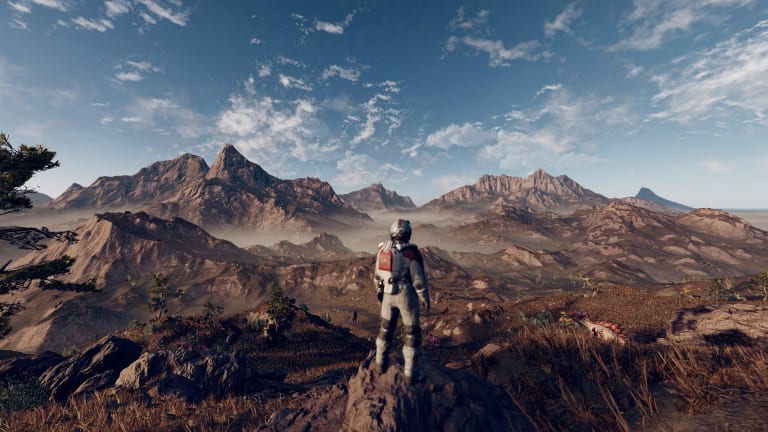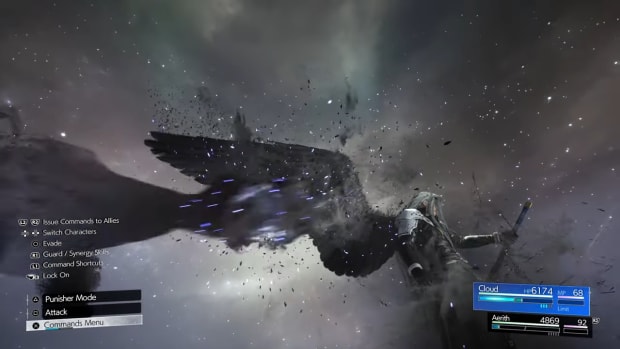
Starfield being 30fps on Xbox is a complete non-issue

We all like our video games to feel smooth and reactive — especially when they’re focused on something that requires precision, like shooting men with space guns as you jet pack over their heads. So I understand the outrage around the announcement that Starfield will run at a capped 30 frames-per-second on Xbox Series X, the most powerful console ever made. The thing is, we’ve never had a video game quite like this before.
For the closest point of comparison, you’d have to look back at Bethesda Game Studios’ previous work. Both Fallout and The Elder Scrolls series share much of the same DNA as Starfield. They’re set within massive worlds, where you’re let loose to go wherever you want and do whatever you want. A lot of games promise this, but none of them do it quite like Bethesda.

This Starfield ship might look cool, but wait until you see the abominations people will create.
Bethesda
You see, Bethesda Game Studios’ worlds are fully simulated. Every non-player character has a life that they live. They go to sleep, wake up, and head to work. Sometimes they even get murdered by wildlife. There’s still smoke and mirrors — as there are in every video game — but this simulation works to make sure you don’t feel like the sole agent of change. It feels like the world could move on without you.
If an NPC does get murdered by a mud crab in Skyrim, you can stumble across the spot days later and find their body still splayed out on the ground. From there, you can raid their inventory and steal their clothes and that’s where they’ll stay for a fair while — dead on the floor, but now in their undergarments. They won’t disappear as soon as you pan the camera away.
Of course, this can’t happen indefinitely. Bodies will vanish after some time because otherwise, the game would become completely unplayable as the number of things stored in memory grows exponentially (in fact, this was famously an issue with memory on Skyrim for PS3 that led to terrible stutters the longer people played the game). But that inventory you took from the corpse lives on, and that inventory isn’t just a series of labels. Drop it all on the floor in your house and that pile of loot and cheese will live on wherever you left it. Almost every object in these games is a physical prop that can be manipulated.
You might be wondering why this is important, but being able to touch and play with anything in the world lends everything a more tangible quality. It works alongside the NPC schedules to reinforce the illusion that this is a living world full of characters with their own motivations. These systems are complex enough when we’re talking about a single map, but mind-boggling when you look at the thousand planets you’re able to visit in Starfield, as well as the derelict ships and enemy vessels (which you can also dock with) scattered across the vast expanse of space itself.
Every planet in the fully explorable galaxy is simulated, with its own rules around gravity, orbit, weather, and more. If you land on a planet and look up at its moon, you only have to hop back in your ship to go there, where you can stand and look right back at the spot where you just left a pile of sandwiches on the planet itself.
In a world where the majority of triple-A games are focusing on just pushing the graphics of linear games where you follow a pre-defined story, Starfield is looking to push what is even possible in an open-world game, striking a balance between tailor-made missions with hand-crafted cities to explore and huge, procedurally generated planets. If you want all of that at 60fps, you can always buy a cutting-edge PC.
I’ve played a few games on console recently where the 60fps option is unstable and I’ve opted for the smoother frame pacing of the 30fps mode. As much as you miss the fluidity of occasional 60fps initially, it all falls away if the experience is more consistent at 30. And even when it’s not consistent — hello, Tears of the Kingdom — it’s easier to forgive when everything else about the game plasters over its technical limitations.
If Starfield can do everything it promises (I’m talking about a big stack of sandwiches in the storage unit of my ship), I have a feeling people will forget all about this controversy as soon as they burst through the clouds and the promise of endless adventure stretches across the twinkling cosmos.





